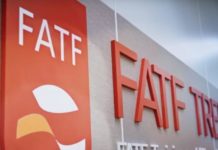By Muhamma Luqman
The Asian Development Bank (ADB) has forecast that Pakistan’s economic growth rate will be 2.8%, the lowest in South Asia and its inflation rate may touch 12%, the highest in the region of eight nations during the current fiscal year.
In the Asian Development Outlook (ADO) Update 2019 released on Wednesday, the Manila-based bank downgraded the economic growth rate forecast for Pakistan while increasing the inflation projections compared to numbers in the outlook issued six months ago.
ADB has once again affirmed all the apprehensions about the flagging economy during the second year of PTI government led by Prime Minister Imran Khan.
Economic prospects for developing #Asia have further dimmed while risks mount as trade and investments weaken, according to the #ADO2019 Update. Regional growth forecast at 5.4% in 2019 and 5.5% in 2020 from 5.9% in 2018. https://t.co/adiLpSwFah pic.twitter.com/YPtoMc840W
— AsianDevelopmentBank (@ADB_HQ) September 25, 2019
Given the pressing need to address sizable fiscal and external imbalances, the economy is expected to slow further, with GDP growth projected at 2.8% in fiscal year 2019-20.
Earlier, the ADB had projected 3.6% growth rate for the current fiscal year.
The outlook also raised the 2019-20 inflation projection for Pakistan to 12% in anticipation of planned tariff hikes for domestic utilities like electricity and gas, higher taxes, and especially the lagged impact of currency depreciation.
The 12% projection was far higher than the ADB’s April 2019 forecast of 7% inflation for this fiscal year.
While the Pakistan Tehreek-e-Insaf (PTI) government has already twice increased electricity and gas tariffs, the ADB report revealed that another round of tariff hikes is likely in coming days.
The report said currency depreciation in a few economies – especially Georgia, Kazakhstan, and Pakistan – has directly raised prices of imported food goods and also impacted them indirectly through higher prices of imported fuel, fertiliser, and animal feed.
With a 2.8% growth rate, Pakistan’s economy will be the slowest growing economy in a bloc of eight South Asian nations. Like the last fiscal year, Bangladesh’s economy will be fastest-growing at a rate of 8%, followed by India at 7.2%, and the Maldives and Nepal at 6.3%. Even war-torn Afghanistan’s economy is projected to grow at a higher rate – 3.5% – than Pakistan’s.
Overall, South Asia’s growth momentum has softened and growth forecasts are lowered to 6.2% for 2019 and 6.7% for 2020.
The GDP growth rate in Pakistan will decelerate for the third consecutive year – a time span that includes two years of the PTI-led government.
According to ADB report, fiscal adjustments are expected this fiscal year that will further suppress domestic demand, and demand contraction will keep growth in manufacturing subdued.
However, agriculture is expected to recover from weather-induced contraction this year, with major incentives in the government’s agriculture support package included in the budget for FY20.
The economic reform programme, which is supported by the International Monetary Fund (IMF), envisages a multi-year strategy for revenue mobilisation to pare public debt to a sustainable level, according to the lender.
It said the budget deficit in this fiscal year is expected to equal 7.2% of GDP – still large but 1.7 percentage point lower than the last fiscal year. The financing of the deficit is expected to come mostly from external and non-bank sources.
Resource allocation indicates a shift towards external borrowing, with net external financing estimated at Rs1.8 trillion, or 4.2% of GDP. Financing from non-bank sources is projected at Rs833 billion, or 1.9% of GDP.
With the reduction of the trade deficit and a continued positive trend in workers’ remittances, the current account deficit is projected to narrow further to 2.8% of GDP in FY20 – 0.2% lower than the earlier ADB projections but higher than government estimates.
Import payments will remain subdued, reflecting weak economic activity and the pass-through of past rupee depreciation against US dollar. The real effective exchange rate is now thought to be near equilibrium, and a lower and more stable rupee is expected to improve export competitiveness.
ADB hoped that foreign direct investment should revive as investors’ confidence is restored with the implementation of the IMF stabilisation and reforms programme.
This should also help bring additional finance from multilateral institutions and other international partners. Along with the activation of a Saudi oil facility with potential disbursements of $1 billion in the current fiscal year, these developments are expected to raise foreign exchange reserves to more than $10 billion by the end of FY2020.
The report states that the economic growth rate slipped to 3.3% in the last fiscal year due to lower investment amid policy uncertainty and persistent macroeconomic imbalances.
In the last fiscal year, contraction in gross fixed investment trimmed growth by 1.3 percentage points, mostly reflecting significantly reduced public investment, as the government cut development spending and the near completion of energy and transport projects, including those initiated under the China-Pakistan Economic Corridor (CPEC).















